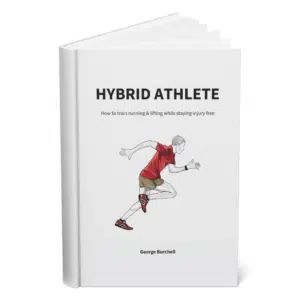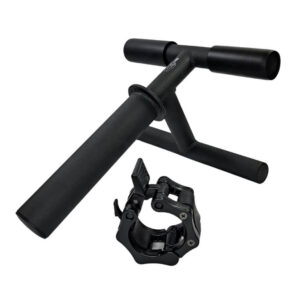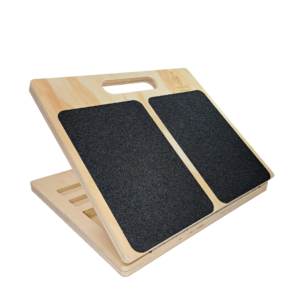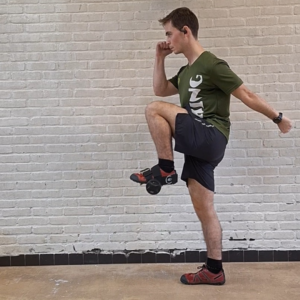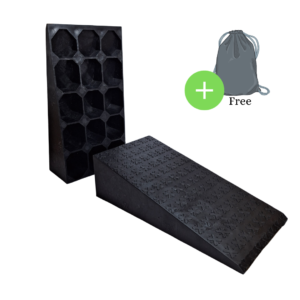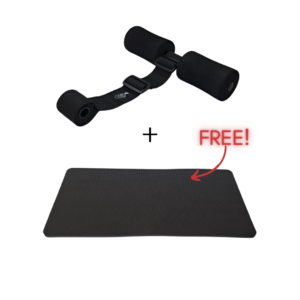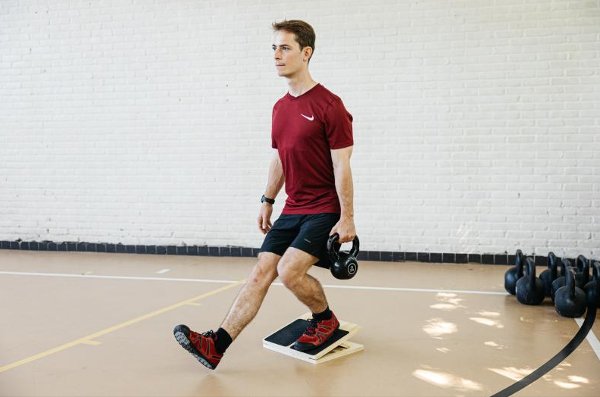
Motion is lotion.
When it comes to running, a lot of repetitive motion can work against you, causing shin splints and issues around various pain points in your kinetic chain. This is where knees over toes for runners comes into play.
Be it sprinting, OCR, ultra marathons, or just casual morning jogs, as a runner you must think about your joints and the biomechanics behind them.
Knees-over-toes (aka KOT) methodology is here to help you bulletproof your lower body so you can run efficiently, and above all – injury-free.
Let’s talk about it.
Table of Contents
The Harmful Side Of Running

Let’s get one thing straight right away – if done properly, running isn’t harmful to your body.
Now, the biomechanics of running are not as simple, or as easy to learn as people believe. A successful gate cycle execution (stance and swing) relies on a large group of muscles working together. When they are not in sync, some muscles need to compensate which increases their load and injury potential.
When your foot strikes the ground, a ground reaction force is distributed upwards through the bones. Again, if done properly, this force is absorbed and spread by your tendons, ligaments, and muscles.
However, due to all sorts of reasons (genetics, previous injuries, bad footwear, etc.), runners may have a tough time developing a healthy gait. No wonder 1 in 3 recreational runners get hurt at some point. The most common injuries due to faulty running biomechanics include:
- IT band syndrome
- Patellofemoral Pain Syndrome (aka runner’s knee)
- Plantar fasciitis
- Hip flexor and abductor strains
- Shin splints
- Back pain
- Various forms of tendonitis and tendinopathies in the lower body
As you can see, runners risk developing issues that can include virtually any lower-body part, or even the spine and the back. Oftentimes, the challenge isn’t rooted in the running technique, per se. A large part of it lies in how we prepare our bodies for the repetitive shock to come.
That’s where knees over toes for runners comes in.
Knees Over Toes For Runners - Benefits and Exercises

Knees Over Toes 101
The KOT training methodology relies on strengthening and bulletproofing your lower body by pushing it to its range of motion. More specifically, KOT focuses on pushing your knee over your toes during movements like squatting and lunging. Positioning the joints at their extreme limits of motion conditions them, making these positions more familiar (and comfortable) to the joints. This adaptation ensures that when the joints are subsequently placed in such positions, they can recover without injury, as the tissues have been accustomed to these extremes.
In a broader sense, a regular KOT program consists of exercises that focus on pushing your ankles, knees, and hips to their natural range of motion, all in unison, in a controlled manner. These bolstered joints can contribute better to the movements of the kinetic chain – this is crucial for walking, jumping, squatting, and most importantly, – running.
Getting strong in the stretched position is not a quick journey, so if you’re only starting with KOT, you should increase your range of motion really slowly.
KOT Exercises for Runners
All KOT exercises revolve around ankle, knee, and hip movement. Naturally, this involves the joints, muscles, and connective tissue. Furthermore, most of these exercises include the whole kinetic chain.
Here’s a list of KOT exercises for runners that will help you bulletproof your lower body and optimize it for running:
- KOT and FHL calve raises
- Tib raises (both bodyweight and tib bar tib raises)
- Reverse sled pull and reverse walking
- ATG and pistol squat
- Nordick Ham curls, reverse Nordics, and sissy squats
- Step ups/downs with slant board squats
- Seated good mornings
- Hip Flexor Raises
Ideally, you should incorporate these into your standard training blocks. You can perform most of these in a gym, or you can get your own bulletproofing gear to train at home.
Again, remember – do not push through pain, and do not rush with breaking your ROM plateau. Patience is the name of the game.
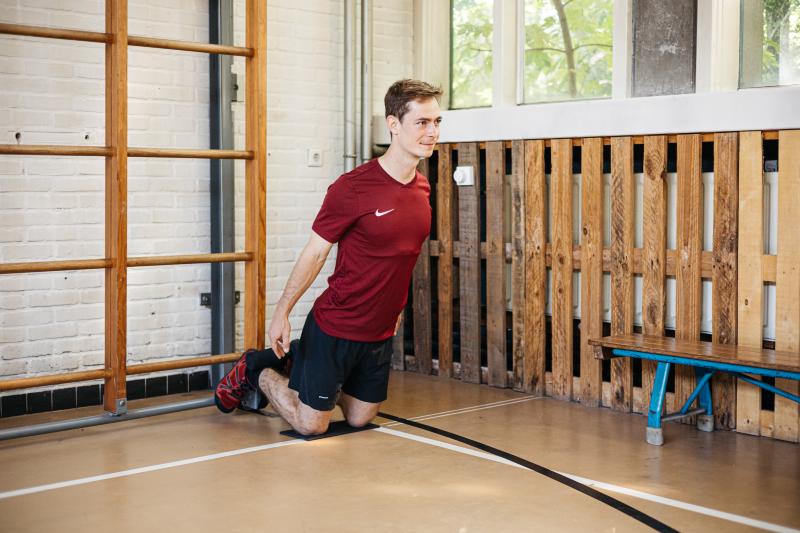
KOT Benefits for Runners
Through a combination of these KOT exercises, as a runner, you will start developing the following benefits:
- Increase in lower body strength – This helps with shock absorption that comes from hitting the ground while running.
- Better ROM and joint mobility – your hips, knees, ankles, and balls of your feet, everything will be pushed to its limits and strengthened in the stretched position.
- Enhanced biomechanics of the lower body kinetic chain – KOT makes your joints and muscles work in unison, and that directly translates to a more stable gait cycle. This also helps with diminishing the initial force that comes from your feet striking the floor.
- Increased ankle mobility – a lot of KOT exercises focus on increasing the range and control of ankle dorsiflexion. This movement plays a key role in both landing and lift-off.
- Healthier joints – Over time tendons and ligaments get stronger, securing the joint. As a runner, you can’t get enough injury prevention. Everyone gets hurt, and injuries do happen to runners a lot. But you can get those numbers down with knees-over-toes for runners.
Knees Over Toes For Runners - Is It Worth It?
It most definitely is. As you can see, knees over toes for runners solves more than just the question of bulletproofing. It keeps your joints healthy AND it prepares them to properly and safely absorb the shock that comes from running.
There are no downsides to putting some of KOT exercises into your workouts and see for yourself. Just be ready to take it slow.
Why wait for the next running injury to happen - start your bulletproofing journey right now:
Above all, a storyteller. Then comes marketing, branding, writing music, powerlifting, and woodworking.

